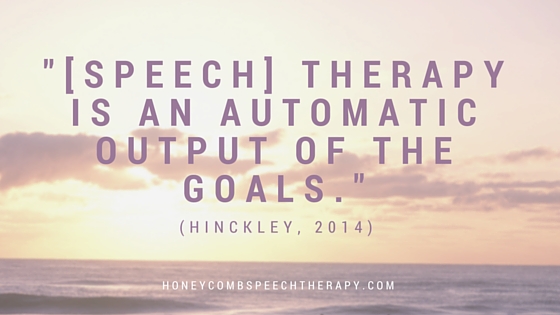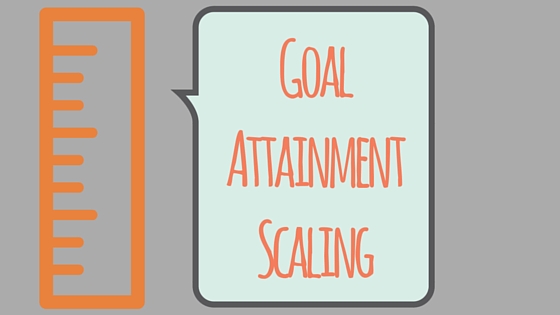This year I have been on a journey to improve the person-centered care I offer in speech therapy. It’s been a popular buzz word in health care, but how does “person-centered care” actually translate into our day-to-day practice as SLPs? Today I am sharing the simple steps you can take to move towards writing person-centered goals.
Why use Person-Centered Goals? Simply put, the goals that we write shape the therapy we provide. So, if you want to provide person-centered therapy, writing person-centered goals is a good place to start.

How to Create Person-Centered Goals
Step 1: Person/Family interview to determine goals, priorities, and values that determine what needs you can help meet
Step 2: Repeat back/clarify the goal is that is being expressed.
Step 3: Break down the patient’s goal to relate to speech therapy if needed.
Step 4: Use the Person/Family to determine what “success” looks like. I absolutely LOVE using Goal Attainment Scaling for this step, because what “success” looks like can vary by each person.

Goal Attainment Scaling: This is a 5-point scale that is created by the Person/SLP to collaboratively determine goals and what success looks like. I created a 9-page packet of info so that you can start using Goal Attainment Scaling to create person-centered goals TOMORROW!

The Goal Attainment Scaling Packet includes:
*What is Goal Attainment Scaling?
*Why should I use Goal Attainment Scaling? (Hint, read blog post above) 🙂
*Key References re: Goal Attainment Scaling in Speech Pathology
*4 Steps with specific questions to ask to facilitate discussion and write a person-centered goal
*Reprintable / reusable template for Goal Attainment Scaling (use it again and again!)
*6 different examples of Goal Attainment Scaling for a variety of functional skills for cognition and communication
It is KEY that the Person/Family input is used to set not only the goal, but also the measure of improvement/success. As an example, I had a patient who wanted to get back to baking bread but had been unsuccessful due to attention/memory challenges after an anoxic event. We used Goal Attainment Scaling to determine a timeline for his personal goals and what success would look like. This was a learning experience for me, because without the Person’s input I would have wanted him to bake a loaf of bread every week, independently. BUT, in the Goal Attainment Process, I discovered that he viewed success as being able to bake 1 loaf of bread a month with his wife as a support. Goal Attainment Scaling allowed our sessions to be truly person-centered in terms of setting a goal and defining success.
If you haven’t been using Goal Attainment Scaling, here’s your chance to start tomorrow!
Reference from quote: Hinckley, J, & Yones, D. (2014). Tools and techniques for patient-centered care for aphasia: Case examples [PowerPoint slides.] Retrieved from http://www.asha.org/events/convention/handouts/2014/1171-hinckley/.
Hey! Are you Goal attainment scaling resources still available? when I click on the link it says error 404
Yes! It’s all in the Activity Studio! https://www.honeycombspeechtherapy.com/activity-studio